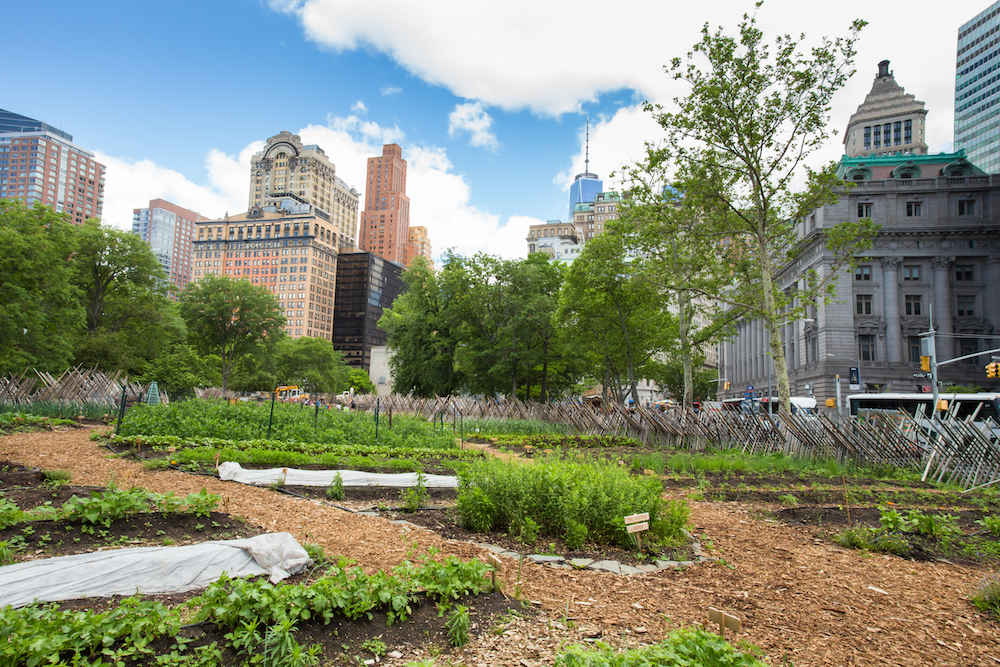There’s so much more to food than what ends up on our plates. The journey food takes to end up there is complicated and wrapped up in political forces, privatisation, climate and social injustices. One food concept you might not be very familiar with is food sovereignty and how the current global food system has been built to inflame inequalities.
What is Food Sovereignty?
Food Sovereignty was coined by the organisation La Via Campesina at the World Food Summit in 1996, who describe themselves as "the international peasant's voice...bringing together millions of peasants, small and medium-size farmers, landless people, rural women and youth, Indigenous people, migrants and agricultural workers from around the world". This was their response to free trade regimes around the world - pacts between two or more nations to reduce barriers of tariffs, duties or quotas on imports and exports among them.

[Image from the La Via Campesina 20 year anniversary conference in Indonesia]
La Via Campesina explains Food Sovereignty as "the right of peoples to healthy and culturally appropriate food produced through sustainable methods and their right to define their own food and agriculture systems". Meaning that not only should people have healthy and abundant food but sustainable and culturally appropriate food too. In this way, as journalist Raj Patel explains, food sovereignty is the right to have rights.
Food Sovereignty should adapt to the people and places where it is being put in practice. It is not a one-size-fits-all solution, it's a human right to access not only nutritional and sufficient food but also food that is sustainable and reflects cultural, social and religious knowledge systems.
Summarised Food Sovereignty Principles
- Food sovereignty first and foremost emphasizes the right to sufficient, healthy and culturally appropriate food for all.
- Food sovereignty values food providers. This is small scale farmers, pastoralists, artisanal fishers, forest dwellers, Indigenous peoples and agricultural and fisheries workers, including migrants, who cultivate, grow, harvest and process food and rejects policies that threaten them.
- Food sovereignty combines efforts by providers and consumers, putting them at the centre of decision making when it comes to food issues.
- Food Sovereignty boosts locally made decisions and rejects privatisation of natural resources.
- Food sovereignty builds on the skills and knowledge of local food providers and Indigenous peoples to develop and manage localised food production and harvesting systems.
- Food sovereignty works with nature to maximise the contribution of ecosystems and improve resilience and adaptation and rejects methods that depend on industrialised, environment damaging production methods.
Why is it needed?
Like other injustices in our contemporary world, food is political. Political forces and big corporations control the food production from seed to table and this sort of centralisation and increasing privatisation of food systems is incredibly damaging to the fundamental human right to food.
Globalisation, industrialised agriculture, overfishing and mass food production are all contributing to food insecurity in the Global South and making people dependent on the food they themselves cannot produce. Even some aid projects result in this sort of insecurity because they don't look at the cultural systems in place. People should have the right to control their own food production systems that are culturally appropriate and ecologically produced.
How is it linked to climate change?
Food production is also one of the biggest drivers of climate change. According to the New York Times, the world's food system is responsible for one-quarter of the planet's greenhouse gas emissions that humans generate each year.
GRAIN, another non-profit organisation (similar to La Via Campesina) work to support small farmers and social movements in their fight for community-controlled and biodiversity-based food systems have proven that "that worldwide redistribution of land to small farmers and Indigenous communities, combined with policies to support local markets and ecological agriculture, can cut global greenhouse gas emissions in half within a few decades"
According to the Climate Justice Alliance , between 44% and 57% of all greenhouse gas emission come from the global food system in some way or another. This could be through deforestation, transportation, processing, waste and the list goes on and on. These industrialised food systems are also heavily reliant on pesticides and fertilizers that are both toxic to the health of humans and the environment.

How is this a race issue?
Systemic racism permeates all aspects of society, and it is also built into our food systems.
Current food systems are an example of enviro-racism, where Black and Indigenous People of Colour (BIPOC) are often pushed out of wealthy, white neighbourhoods following a history of displacement, enslavement and devaluing of labour. They are pushed into neighbourhoods that don't have access to healthy foods, affordable foods or farming practices and foods that they identify with culturally, this is often on the same land they have ancestral ties too. This means that BIPOC communities have the right to regain control of land and food, to have cooperative ownership over private ownership, and grow food that is healthy and sustainable.
Ashley Gripper, a PhD Candidate in the Environmental Health Department at the Harvard T.H. Chan School of Public Health, when talking about Black-led organisations in America bringing back agricultural farming into the cities, explains that
"many Black urban communities have kept in touch with their agricultural roots, establishing farms and gardens throughout the United States. Black people have ancestral ties to this land—to caring for it, nurturing it, loving it, and allowing it to heal our communities and us—and we have faced immeasurable discriminatory practices and policies as we sought to reclaim and live in relationship with the land. We must not forget this history as we engage Black agricultural communities in our research endeavours."
As Gripper explains, the narrative of urban agriculture has been co-opted by white people. White community gardens erase decades of urban agricultural practices and knowledge by Black communities. Also, "white-led urban agriculture projects receive the majority of grant and institutional funding". Black-led urban agriculture is a way for BIPOC individuals and communities to achieve economic autonomy and safer food choices.
BIPOC communities maintain the right to be able to incorporate traditional farming and agricultural practices into modern-day food systems because they hold traditional knowledge of the land and practices. In Australia, since colonisation, Indigenous people have systematically had their land and agricultural practices stolen from them. Food sovereignty acknowledges the intricate correlation between race and food and strives to create a racially just food system.
So, what can you do?
Here are some ways you can help to build a healthy, sustainable and racially just food system:
- Shop at farmers markets, buy local and organic food that is pesticide and fertiliser free
- Do your research on where your food came from, how it was produced and who owns it
- Look for BIPOC-led community gardens or food cooperatives in your country and support them!
- DONATE to food sovereignty alliances, community farms and BIPOC-led organisations
- Do your research on big food corporations that you buy from and make sure their factories and practices don't affect the health of people or our planet
Here are some Alliances and organisations to get you started:
NAFSA: Native American Food Sovereignty Alliance

